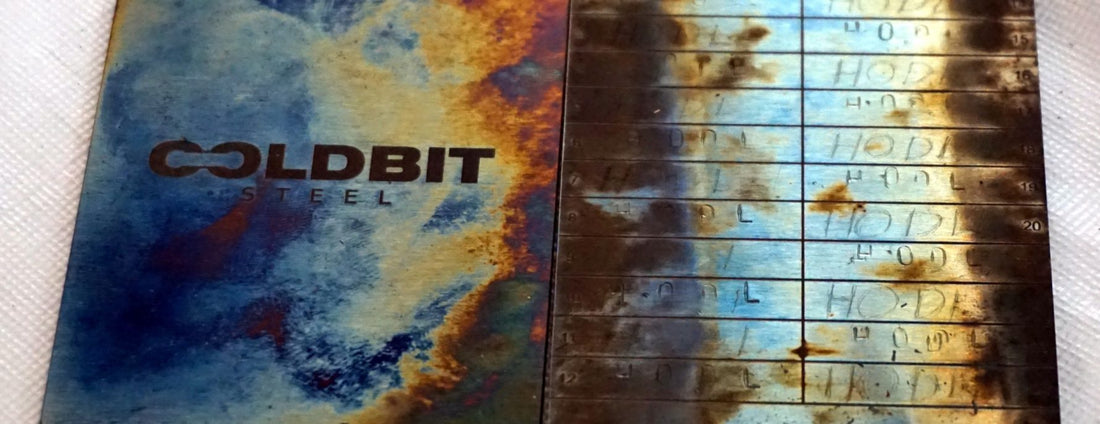
Putting Coldbit Steel to the Ultimate Test
Share
Last year (2018) Jameson Lopp performed an extreme stress testing of a few Bitcoin metal wallets (BIP-39 seed backup). At that time Coldbit Steel was in the design phase and I took the first test results into consideration when designing it. This year I'm happy to announce that both Coldbit Steel and Coldbit Passphrase survived extreme heat, corrosion (acid) and 20 tons of pressure - all performed by Mr. Lopp. They both scored A on the A-F scale (A being the best and F being a catastrophic failure):
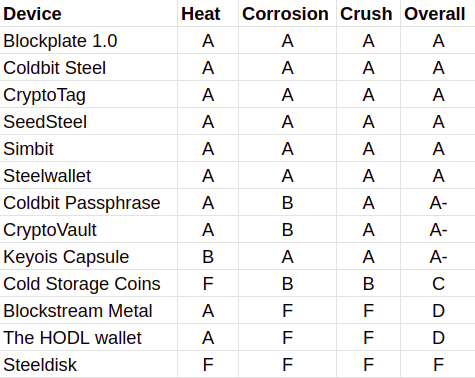
I appreciate the time, money and effort put into testing all these metal wallets. I can see that Mr. Lopp tried hard to be as objective as possible and I believe these results reflect that. For example, when ordering Coldbit Steel + Coldbit Passphrase he used his opsec skills and didn't reveal his identity to me (knowing that this could potentially influence the quality of the product I'd send - I could prepare a special version of the metal wallet with extra durability features to withstand the extreme conditions for example).
As a sidenote I should mention that I wasn't very impressed with the quality of stamping on Coldbit Steel to be honest. This is how it looked like in the test:
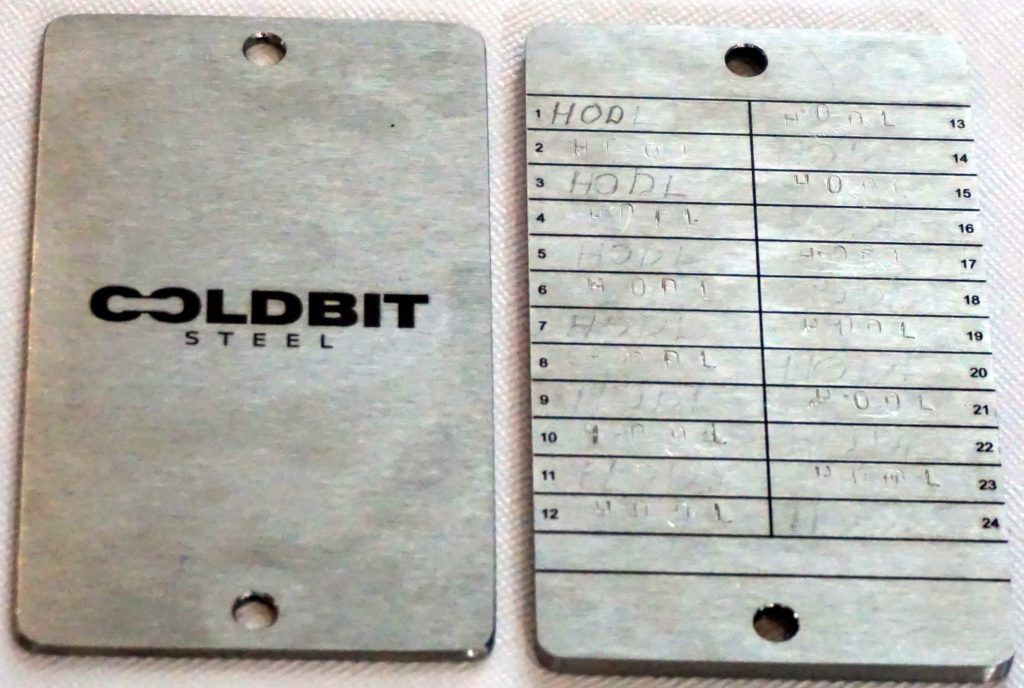
This is how it looked like when I stamped the seed words and a wallet ID using a 1.5kg (3 lbs) club hammer:
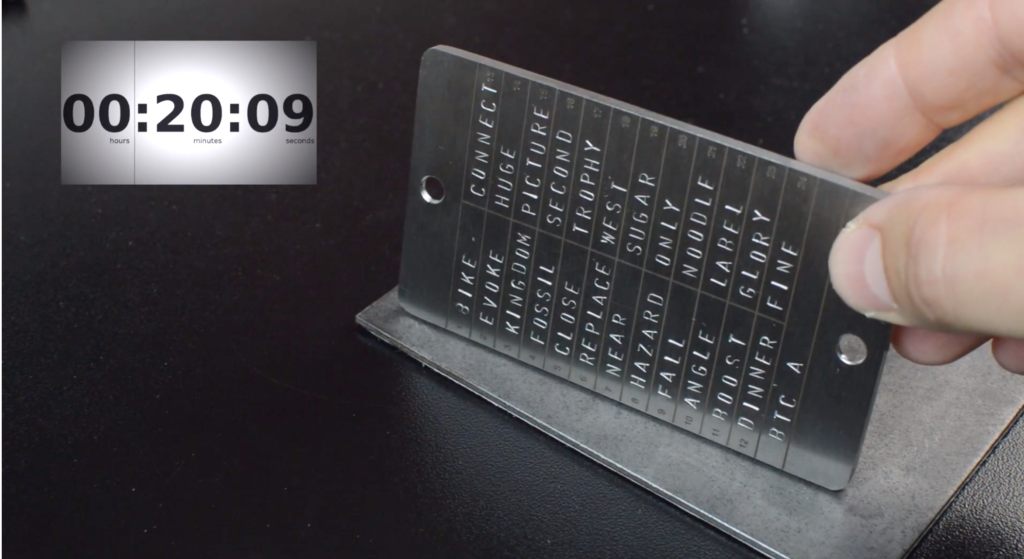
There are 2 possible reasons I can think of that can explain such poor quality stamping:
- Using a hammer lighter than 1.5kg (3 lbs). I recommend using at least 1.5kg (3 lbs) or 2 kg (4 lbs) club hammers. When you swing it it has enough momentum to leave deep marks on the first try. In practice you can stamp the words using a 1kg (2 lbs) hammer but it requires a little bit longer swing and using more muscle force than just relying on gravity and momentum. I don't know the weight of the hammer Mr. Lopp used but I can assume it was a lighter version.
- Unstable stamping surface/support. Examples include a wobbly table and surfaces that bend when hit with a hammer. The best stamping surfaces are: concrete, metal or hard wood.
Stamping with a hammer is best learned by practice - that's why every Coldbit Steel comes with a testing plate on which you can practice stamping for as long as required until you get deep and clearly visible words.
The stress test consisted of 3 parts:
- Extreme heat 2000°F / 1093°C (2x the house fire temperature)
- Corrosion - muriatic (hydrochloric) acid for 12 hours
- Crushing with a 20 ton hydraulic press
Heat:
Coldbit Steel: "Discoloration but no data loss":
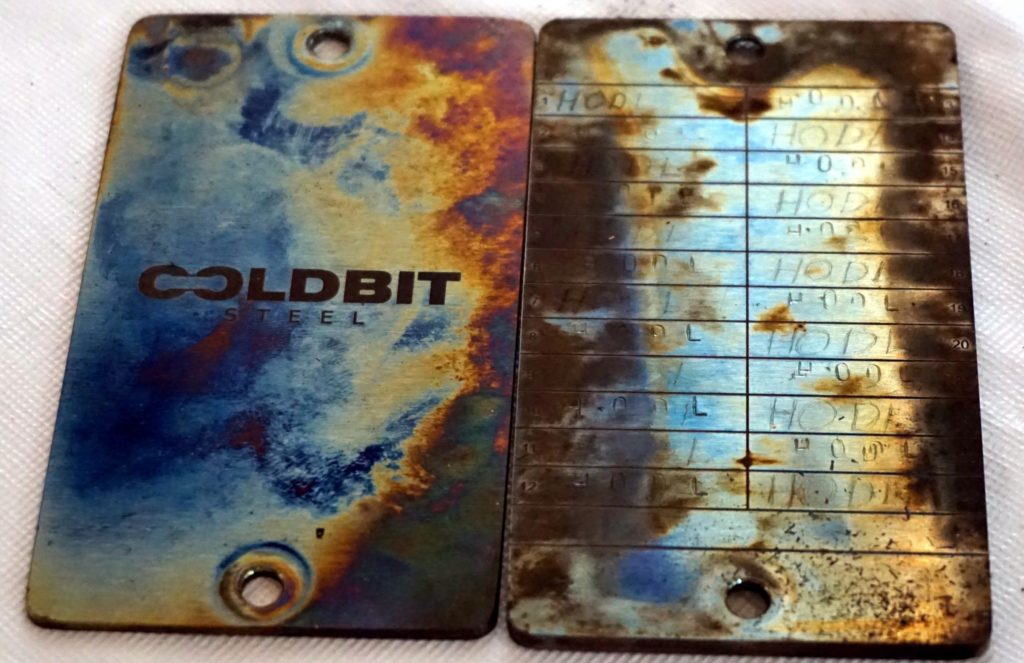
Coldbit Passphrase: "Performed admirably; while the freehand etching was barely readable, the stamping was quite readable other than the fact that they were partial stamps.":

Corrosion (hydrochloric acid):
Coldbit Steel: "No data loss; even the freehand etchings were legible.":
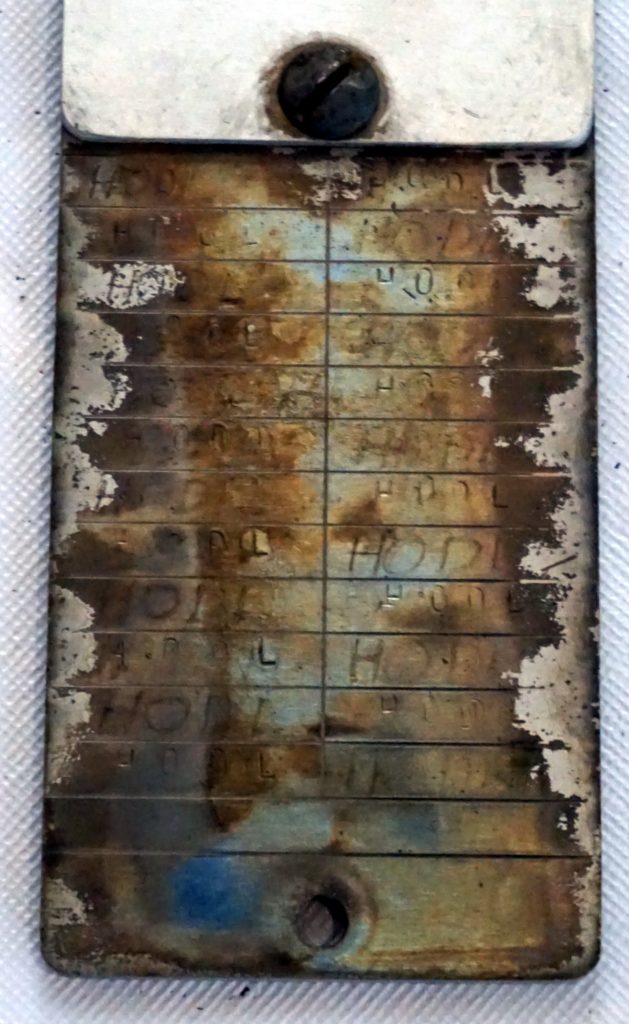
Coldbit Passphrase: "Freehand etching was wiped clean. Template based etching was readable, as was stamping.":

Crushing
Coldbit Steel: "Hard to read, but no data loss.":
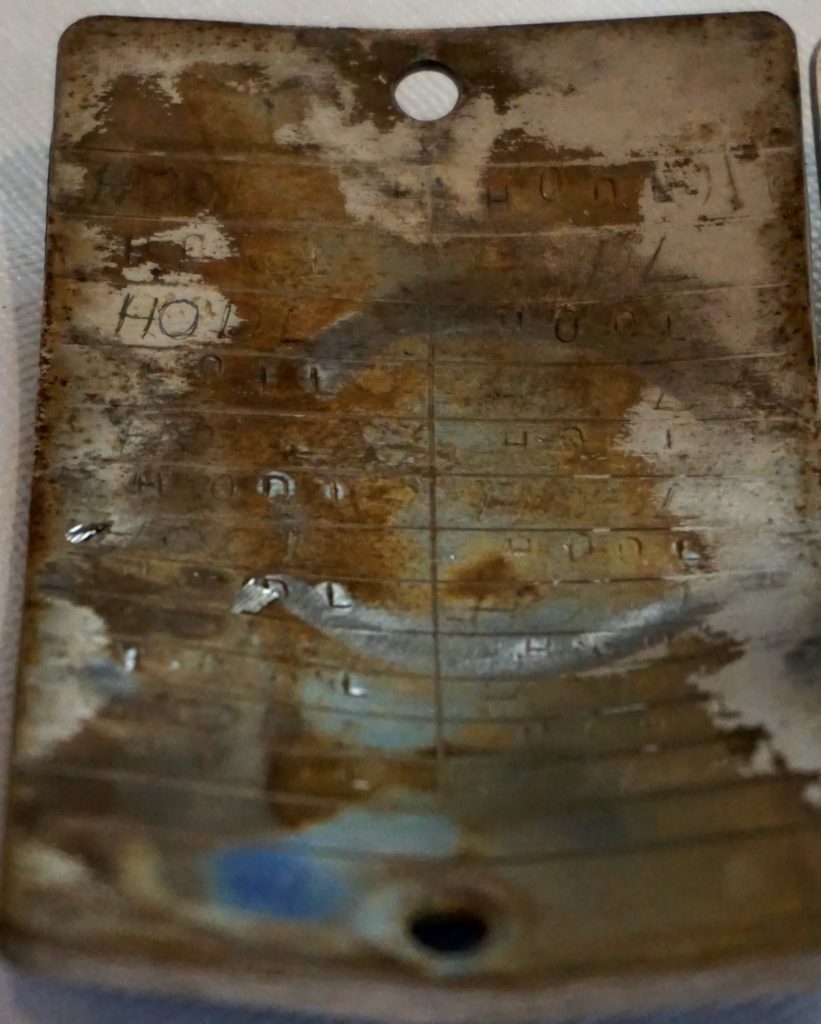
Coldbit Passphrase: "No additional data loss (the acid caused the freehand etched words to disappear.)":

Conclusions
- Data stamped on Coldbit Steel and Coldbit Passphrase is safe from environmental damage (extreme heat, corrosion and crushing)
- Stamping with a hammer is vastly superior to hand engraving or etching. A 1.5 kg (3 lbs) hammer and a stamping set make the deepest marks in the metal and thus the letters can survive the most abuse (fire, scratching, crushing, corrosion etc.)
- Rail-based metal wallets like Cryptosteel and all its clones (Billfodl, Blockstream Metal, The HODL Wallet, Steeldisk) don't do well in such extreme conditions.
Happy stamping!
